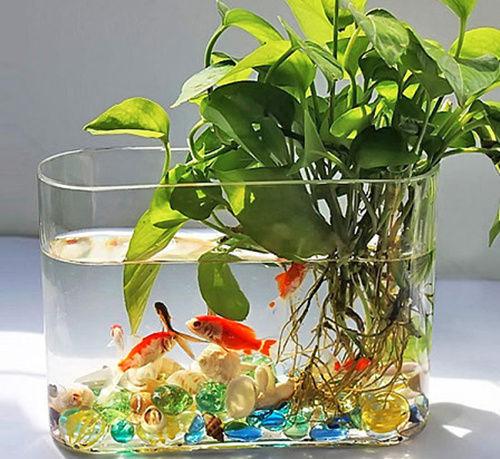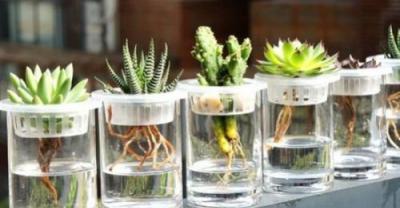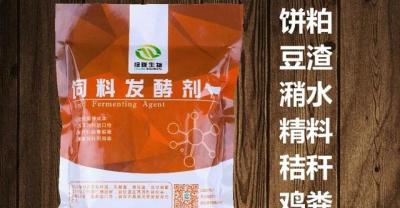Indoor flower cultivation and hydroponic culture skills, clean and hygienic, simple management
Compared with soil-cultured animals, hydroponic animals have the advantages of clean hygiene, complex management, strong appreciability and less diseases. Today, the editor is nagging some common sense about the conservation of hydroponic animals to flower friends.
I. planting pace
1. Remove the soil and wash the roots: pour the selected plants out of the soil, quiver quietly and beat them, then soak them in clean water for 15-20 minutes, then gently wash the roots with hands and change water 2-3 times until the roots are completely soilless. When brushing the roots, it is best to use movable water to increase the damage to the roots, and complex brushing clean.
2. Selection of utensils: round glass jars, glass bottles, glass pots and other utensils should be selected according to the types, shapes, specifications and patterns of hydroponic animals.
3. Put it into the water: put the washed plant into the selected vessel and fix the root. Can choose color stone, Yuhua stone and other complex and good-looking stone. Inject tap water that does not pass through the root system. Initially change the clean water once a day, scrub the roots and utensils at the same time, and increase the number of times of changing water a week later. When the cultivated flowers and plants grow new roots in the water, it is clear that they have adapted to the situation of hydroponics and can change the water every 7 to 10 days or even longer.

II. Maintenance
1. Nourishing fluid: for animals that have just carried out hydroponic culture, it is not advisable to increase the nourishing fluid immediately. It should be kept in clean water for 10-15 days. After the plant complies with the hydroponic condition, hydroponic common nourishing fluid should be added.
2. Change water: under normal conditions, water is changed every 5-10 days in spring and spring, once around 5 days in summer, and once in 10-15 days in summer. Pay attention to the change of water, please expose half or 1/3 of the animal's roots.
3. Cleanliness and hygiene: when changing water, clean water washes the roots and containers of animals, building residual flowers, willows and rotten roots, so as not to purify hydroponics.
4, moisturizing and keeping warm: when the weather is boring, sprinkle leaves with clean water to adhere to humidity, you can choose a small spray bottle to spray water, it is better to spray twice a day. When the indoor temperature is below 5 ℃, pay attention to keep the animals warm.


Third, pay attention to matters
1. Water can choose pure water and tap water. The basin water should not be too much, it is necessary to keep certain roots in the atmosphere, and 70% of the root length should be in the water. Pay attention to the maintenance of the root system, just straighten out, so that most of the root can be soaked in water.
2. If mixed with fish, pay attention to changing water frequently, and pay attention to feeding to fish. If the premise allows to increase oxygenation equipment and medicine to ensure the survival of fish.
3. Under normal conditions, the planting water in the basin should be changed once after a month or two, and the tap water in existence can be used, but note that when the water temperature is lower than the indoor temperature, the tap water should be reused for a period of time to keep the root temperature bumpy. Hydroponic flower and plant animals that do not raise fish usually change water once a month or two. The replaced water can also be used as fertilizer for soil-growing animals, which is rich in nourishment.

4. Animals should be in harmony with the size of the living space, and the spacious living room is suitable for larger animals to avoid emptiness. In relatively small rooms, smaller animals should be selected to prevent depression.
5. Hydroponic animals can be placed on the ground indirectly. The aboveground house arranged large plants such as green radish column, ruby forest aspic column, emerald forest aspic column, Qin Ye Xilin aspic column, brown bamboo, zebra evergreen and other large plants; medium-sized animals such as Olanke, tufted spring feathers, green great men, green emperors, emperors, and bamboo crabapple, purple goose velvet, fairy pen, duck toe, orchid, sycamore, Zhu Jiao, Dolan and other small animals were arranged on the table. On the top of the cupboard, on the wall and for hanging whitewash, choose animals with ivy, green apple, mini tortoise back bamboo, lotus fruit and drooping branches and leaves.
6. Hydroponic flower apparatus: it is best to choose clear utensils so that one can see the roots and the water quality and water level can be seen clearly. The root colors of all kinds of animals are different, such as white, black, orange, etc., these roots or cross-glue, or tender beloved, they are the main part of browsing hydroponic culture.
7. Hydroponic flowers and plants should not be placed directly opposite the air outlet of the air conditioner. If the wind speed is too fast, the branches and leaves will be damaged, the leaves will be curled, and the heavy ones will be luxuriant.
The above is the relevant general knowledge about hydroponic animals collected and sorted by the editor for everyone, and I hope to be helpful to everyone!
- Prev

Farmers who raise native chickens should be careful, or they may lose money for a whole year!
Now people pay more and more attention to the original agricultural products, for many agricultural products, we do not rest assured, now some people should eat native chicken, native eggs, feel these.
- Next

Growth habits and Culture points for attention of Colored Leaf Grass (five-color Grass)
Colorful leaf grass is also called five-colored grass, perilla, brocade purple, etc., colored leaf grass is mostly used for landscaping, can also be planted in the courtyard for ornamental, excellent varieties of colored leaf grass can be done.
Related
- On the eggshell is a badge full of pride. British Poultry Egg Market and Consumer observation
- British study: 72% of Britons are willing to buy native eggs raised by insects
- Guidelines for friendly egg production revised the increase of space in chicken sheds can not be forced to change feathers and lay eggs.
- Risk of delay in customs clearance Australia suspends lobster exports to China
- Pig semen-the Vector of virus Transmission (4)
- Pig semen-the Vector of virus Transmission (3)
- Five common causes of difficult control of classical swine fever in clinic and their countermeasures
- Foot-and-mouth disease is the most effective way to prevent it!
- PED is the number one killer of piglets and has to be guarded against in autumn and winter.
- What is "yellow fat pig"? Have you ever heard the pig collector talk about "yellow fat pig"?

